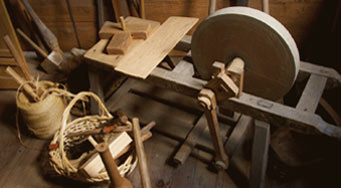Colonial Life Begins in London Town

The General Assembly of Maryland created London Town in 1683 through legislation called "the Act for the Advancement of Trade." Just four miles from the Chesapeake Bay, the town soon became one of the largest seaports in the entire Chesapeake during the 1700s. People brought goods, such as tobacco, flax, wheat, and other exports, to be loaded on the large schooners and other ships that sailed for Britain. In return, shipments of salt, rum, sugar, wine and people, including indentured servants and slaves, arrived in town.
Travelers also came to London Town by road. The main road that went north to south, between South Carolina and Massachusetts, passed through the town. With so many travelers, there was a great need for public houses. Since the South River was too deep to cross and too wide for a bridge, locals set up two ferries. By the 1730s, London Town was so busy and successful that it rivaled Annapolis in terms of economic activity.


